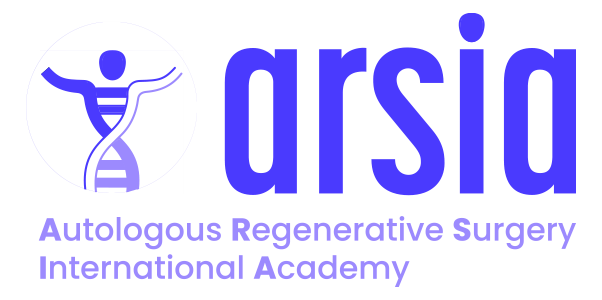Thinking Regenerative
20 Years of progress in Regenerative Surgery
This retrospective highlights the key scientific and regulatory milestones that have shaped this promising field.
Origins of Autologous Regenerative Medicine
In the 1970s, Professor Charles Alfred Vacanti (Harvard Medical School) laid the foundation for tissue engineering. Building on the pioneering work of Leonard Hayflick (UCSF), he demonstrated that fibroblasts can undergo 50 to 60 cell divisions before entering apoptosis.
Vacanti introduced an innovative concept: combining scaffold structures with autologous cells and growth factors to regenerate tissues. His work showed that, unlike allogeneic cells, autologous cells can potentially replicate up to 5,000 times within their native environment.
The critical role of the Autologous principle
This observation became pivotal for the development of Regen Lab’s autologous cell-based technologies.
Professor Jean-Hilaire Saurat (University Hospitals of Geneva), a pioneer of auto-hemotherapy, emphasized the importance of removing the red blood cell fraction to optimize the regenerative effects of Platelet-Rich Plasma (PRP):
“For the therapy to be effective, the focus must be on the active autologous components.”
Jean-Hilaire Saurat
From PRP to multidisciplinary clinical applications
In the early 2000s, PRP was first used in dental implantology by Dr. Robert E. Marx, followed by orthopedic applications led by Dr. David Knighton, who pioneered its use in chronic wound healing.
Soon after, Regen Lab expanded PRP applications to soft tissues: treating chronic wounds, severe burns, and later, to aesthetic dermatology, particularly for alopecia and skin aging.
Dr. Ghislaine Beilin identified a crucial insight: “If osteoporosis exists, so does dermatoporosis.”
This marked the beginning of dermato-aesthetic regenerative therapy, where PRP has since become a valuable ally in anti-aging medicine and skin regeneration.
Today, autologous regenerative medicine makes it possible to slow down local tissue senescence and restore the quality of damaged tissues.
The critical role of the Autologous principle
The production of autologous PRP is strictly regulated to ensure safety and clinical effectiveness. The medical devices (MDs) used must meet the following international requirements:
Regulatory classification: Class IIb or higher
Devices used for isolating and concentrating autologous platelets must be classified at least as Class IIb under the EU-MDR 2017/745 regulation, reflecting a high-risk category.
ISO 13485 Certified quality management system
Manufacturers must operate a quality management system compliant with the ISO 13485 standard (and its subsequent versions), ensuring control over design, manufacturing, and quality assurance processes. Annual audits by accredited notified bodies are mandatory.
CE Marking & Technical documentation
Each device and accessory must carry the CE Mark, a prerequisite for market access in Europe. This requires comprehensive technical documentation demonstrating the device’s safety and compliance with applicable regulations.
Clinical Evaluation Report (CER)
A robust Clinical Evaluation Report, based on rigorous clinical data, is required to demonstrate the efficacy and safety of each device prior to CE certification. The CER is regularly updated and submitted to the relevant regulatory authorities as part of post-market surveillance.
The regulatory evolution of Autologous Regenerative Medicine & Surgery
Regenerative surgery is now governed by strict regulatory frameworks:
Creation of the International Conference on Harmonisation (ICH)
Regulatory authorities from developed countries joined forces to harmonize standards for medical devices, leading to the creation of the Medical Device Single Audit Program (MDSAP).
Adoption of the EU-MDR 2017/745 Regulation
The European Union enacted the new EU-MDR 2017/745 regulation, which is now the gold standard for medical devices.
It introduced two major principles:
- Rigorous evaluation of companies’ quality management systems
- Comprehensive reassessment of each technical and clinical file
Implementation of MDSAP
The MDSAP program officially came into force and was immediately adopted by Canada, the United States, Australia, Brazil, and Japan.
Thanks to its proactive approach, Regen Lab became the only company authorized to present at scientific medical congresses on this topic.
The EU-MDR transition: a turning point
Regen Lab anticipated and successfully adapted its medical devices and quality system to comply with the new regulation:
• Full certification under EU-MDR 2017/745
• Reassessment and validation of its entire medical device portfolio
• Certification valid for the next 5 years
The International Academy of Actual Regenerative Surgery supports the evolution of regenerative surgery promoting scientific excellence, clinical rigor, and adherence to international standards.
References
Charles Alfred Vacanti, Professor at Harvard Medical School, pioneer of tissue engineering, famous for the Vacanti ear experiment.
Leonard Hayflick, microbiologist at UCSF, renowned for discovering the Hayflick limit (finite cell division).
Jean-Hilaire Saurat, Professor Emeritus, former Head of Dermatology at the University Hospitals of Geneva.
Robert E. Marx, Professor of Implantology and Maxillofacial Surgery at the University of Miami, PRP pioneer in dentistry.
David Knighton, Surgeon, pioneer of PRP applications in chronic wound healing.
Ghislaine Beilin, Aesthetic and anti-aging physician, recognized PRP expert in dermatology.
